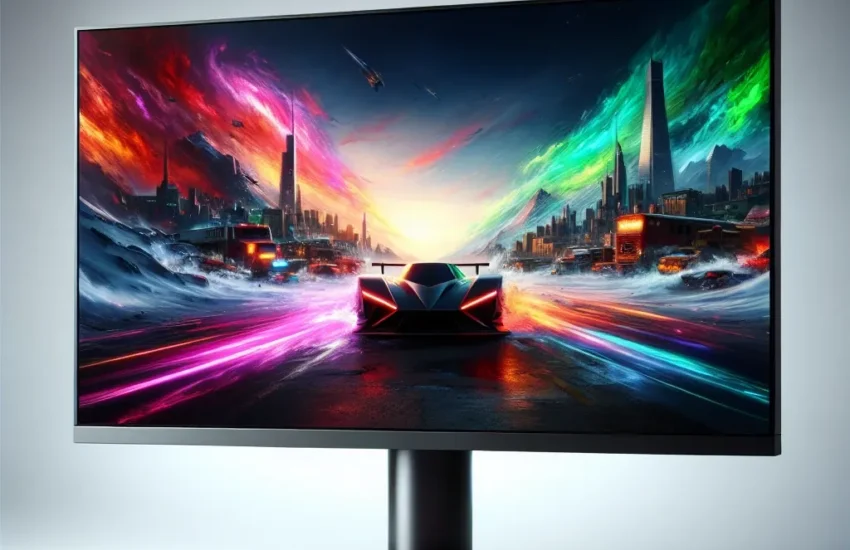Introduction to LED Monitors with G-Sync and FreeSync Technology
In today’s digital world, display technology has made significant strides. LED monitors, equipped with synchronization technologies like G-Sync and FreeSync, have become the gold standard for gamers and professionals alike. But what exactly are these technologies, and how do they enhance the user experience?
| Aspect | G-Sync Technology | FreeSync Technology |
|---|---|---|
| Developer | NVIDIA | AMD |
| Compatibility | NVIDIA GPUs | AMD GPUs and some NVIDIA GPUs |
| Implementation | Hardware-based | Software-based |
| Cost | Higher | Lower |
| Performance | Excellent | Very Good |
Understanding LED Monitors
LED monitors use Light Emitting Diodes (LEDs) to produce images. These monitors are known for their energy efficiency, superior image quality, and slim design. They are used in various applications, from office tasks to high-end gaming setups.
What is G-Sync Technology?
G-Sync is a proprietary technology developed by NVIDIA. It synchronizes the refresh rate of an LED monitor with the frame rate of an NVIDIA GPU (Graphics Processing Unit). This synchronization eliminates screen tearing, reduces stuttering, and provides a smoother gaming experience.
Key Features of G-Sync Technology
- Adaptive Sync: Automatically adjusts the monitor’s refresh rate to match the GPU’s output, ensuring no lag or screen tearing.
- Reduced Latency: Enhances responsiveness, making it ideal for competitive gaming.
- High Dynamic Range (HDR): Offers vibrant colors and better contrast.
What is FreeSync Technology?
FreeSync is AMD’s answer to screen tearing and stuttering. Unlike G-Sync, FreeSync is based on the Adaptive-Sync standard, which is part of the DisplayPort 1.2a specification. This means it doesn’t require additional hardware, making it a more cost-effective solution.
Key Features of FreeSync Technology
- Open Standard: Works with both AMD and some newer NVIDIA GPUs.
- Wide Range of Compatibility: Available on a larger variety of monitors compared to G-Sync.
- Cost-Effective: Generally, FreeSync monitors are cheaper than their G-Sync counterparts.
Comparing G-Sync and FreeSync
Choosing between G-Sync and FreeSync depends on several factors, including budget, GPU type, and specific needs. Here’s a detailed comparison to help you decide:
| Aspect | G-Sync | FreeSync |
|---|---|---|
| Price | Generally more expensive due to specialized hardware requirements | More affordable, relying on software and open standards |
| Performance | Top-notch, offering minimal lag and tearing | Very good performance but can vary depending on the specific monitor and GPU used |
| GPU Compatibility | Limited to NVIDIA GPUs | Primarily AMD GPUs, some support for NVIDIA |
| Monitor Availability | Less variety | More options available |
Benefits of Using G-Sync and FreeSync
Whether you choose G-Sync or FreeSync, both technologies offer numerous benefits that enhance your overall viewing experience:
- Fluid Gameplay: Both technologies ensure smooth graphics by eliminating screen tearing and stuttering.
- Improved Visual Quality: Enhanced color accuracy, brightness, and contrast.
- Reduced Eye Strain: Smoother transitions and less flicker help reduce eye fatigue during extended use.
Ideal Use Cases
The choice between G-Sync and FreeSync often comes down to specific use cases:
- Gaming: Competitive gamers may prefer G-Sync for its superior performance and reduced input lag.
- Professional Work: Content creators and professionals might opt for FreeSync for its cost-effectiveness and broader monitor compatibility.
- Casual Use: Either technology provides a significant upgrade over standard monitors, enhancing general media consumption and everyday tasks.
Future of Sync Technologies
As technology continues to evolve, both G-Sync and FreeSync are expected to improve further. Innovations like Variable Refresh Rates (VRR) and better HDR support will likely become standard features, making high-quality displays more accessible to the average consumer.
Conclusion
Whether you’re a gamer seeking the ultimate performance or a professional in need of reliable, high-quality displays, LED monitors with G-Sync or FreeSync technology offer unparalleled advantages. Understanding your specific needs and the features of each technology will guide you to make an informed decision, ensuring seamless graphics and an enhanced visual experience.

